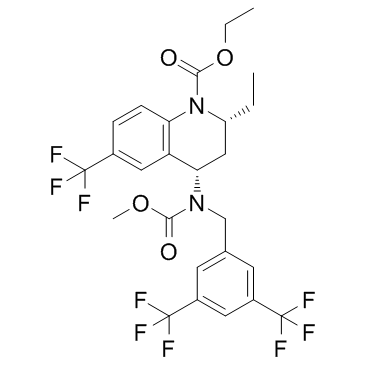Will torcetrapib be the next big thing in coronary heart disease risk reduction?
James M McKenney, John A Hoekstra
Index: Curr. Atheroscler. Rep. 9(1) , 48-56, (2007)
Full Text: HTML
Abstract
Scientists are seeking ways to increase high-density lipoprotein (HDL) cholesterol to lower coronary heart disease (CHD). Emerging from this search is torcetrapib, a partial inhibitor of cholesteryl ester transfer protein. Via this mechanism, cholesteryl ester is prevented from being transferred to apolipoprotein B-containing lipoproteins and is retained in HDL particles, where ostensibly it may be delivered directly to the liver for elimination. Proof that this may reduce atherosclerotic vascular disease is provided by population studies of cholesteryl ester transfer protein (CETP) deficiencies and single nucleotide polymorphisms of CETP, and experiments in animal models treated with torcetrapib. Torcetrapib effectively raises HDL cholesterol when used alone and when added to background therapy with atorvastatin. The drug appears to be well tolerated. Large surrogate and survival outcome trials are underway to document its impact on CHD.
Related Compounds
| Structure | Name/CAS No. | Molecular Formula | Articles |
|---|---|---|---|
 |
Torcetrapib
CAS:262352-17-0 |
C26H25F9N2O4 |
|
Cholesteryl ester-transfer protein inhibitors stimulate aldo...
2015-04-01 [J. Pharmacol. Exp. Ther. 353(1) , 27-34, (2015)] |
|
Effect on cardiovascular risk of high density lipoprotein ta...
2014-01-01 [BMJ 349 , g4379, (2014)] |
|
Identification of a novel, non-tetrahydroquinoline variant o...
2014-07-01 [Xenobiotica 44(7) , 591-605, (2014)] |
|
Upregulating reverse cholesterol transport with cholesteryl ...
2013-01-01 [Arterioscler. Thromb. Vasc. Biol. 33(1) , 13-23, (2013)] |
|
Effect of dalcetrapib, a CETP modulator, on non-cholesterol ...
2011-12-01 [Atherosclerosis 219(2) , 761-7, (2011)] |